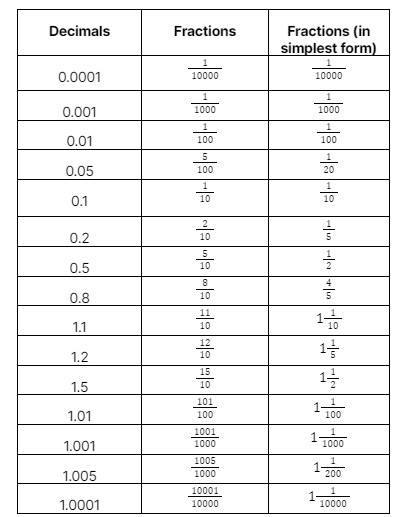Decimal into Fraction
Other Calculators
- Acre to Square Feet Calculator
- Acre to Square Metre calculator
- Age Calculator
- Billion to Rupees Calculator
- Binary to Hex Calculator
- Centimeter to Millimeter Calculator
- Centimetre to Foot Calculator
- Centimetre to Metre Calculator
- Cubic Foot to Cubic Meter Calculator
- Decametre to Metre Calculator
- Feet to Centimeter Calculator
- Gallons to Liters Calculator
- Hectare to Acre Calculator
- Hour to Minute Calculator
- Inch to Feet Calculator
- Kilometre to Mile Calculator
- LBS to KG Converter
- Meter to Feet Calculator
- Metre to Inch Calculator
- Metre to Kilometre Calculator
- Metre to Millimetre Calculator
- Metres to Centimetres Calculator
- Millimetre into Inches Convertor
- Millimetres to Centimetres Calculator
- Million to Crore Calculator
- Million to Lakhs Calculator
- Million to Rupees Calculator
- Square Foot to Square Metre Calculator
- Square Meter to Square Feet Calculator
- Volume of Cuboid Calculator
What is Decimal?
Decimals represent a whole unit or a part of a whole number. A decimal number signifies that there is a decimal point between a whole number and a fractional part of the entire number. The decimal point is the most important part and it is exactly to the right of the unit’s position and tells us what each position means.
What is a Fraction?
A fraction is a mathematical way to write parts of whole numbers. For instance, Let’s take an entire cake, and divide it up equally between 2 people, each person will have 12 of the cake or if written in words, one half of that cake.
How to Convert Decimal To Fraction Calculator?
To illustrate how to convert decimals to fractions, let’s take 5.5 as an example. When converting a decimal to a fraction, these steps should be followed:
You should start by splitting the decimal up into 2 parts: the part on the left of the decimal point and the part on the right.
The decimal 5.5 has 2 parts: the ”5” which is the number of whole units, and ”.5” which is the fractional part. Identify the number of decimal places the fractional part has and convert it into a fraction with a denominator of 1 followed by the equivalent number of zeros as decimal places.
In the given number, there is only one decimal place, so we will put 10 in the denominator. Hence, we can write
0.5 = 5/10 → 5.5 = 55/10
As a final step, simplify the fraction by finding the greatest common factor between the numerator and denominator and dividing through:
5/10 = 1*52*5 = 1/2
So the decimal 5.5 can be written as the fraction: 11/2
Conversion Table
Solved Examples
Example 1: Convert 1.025 to fractions.
Solution: The decimal 1.025 has 2 parts: the ”1” which is the number of whole units, and ”.025” which is the fractional part.
In this case, there are 3 decimal places, so we put 1000 into the denominator. So, we can write
1.025 = 1025/1000
Lastly, simplify the fraction by dividing through HCF
1.025 = 1025/1000 = 4140 = 1140
Therefore, 1.025 is equal to 1140
Example 2: Convert 4.666 to fractions.
Solution: The decimal 4.666 has 2 parts: the ”4” which is the number of whole units, and ”.666” which is the fractional part.
In this case, there are 3 decimal places, so we put 1000 into the denominator. So, we can write
4.666 = 4666/1000
Lastly, simplify the fraction by dividing through HCF
4.666 = 4666/1000 = 2333/500 = 2333/500
Therefore, 4.666 is equal to 2333/500.
 Profile
Profile Settings
Settings Refer your friends
Refer your friends Sign out
Sign out






